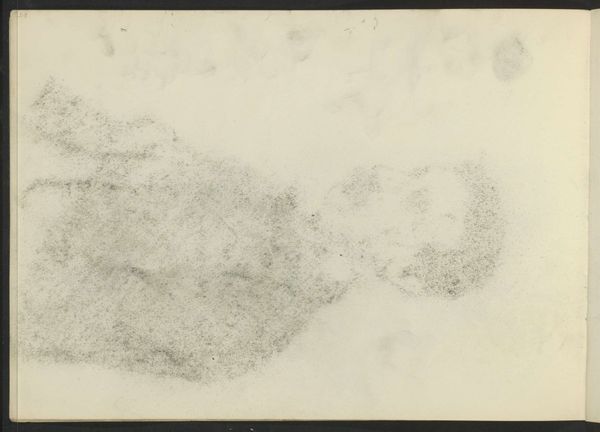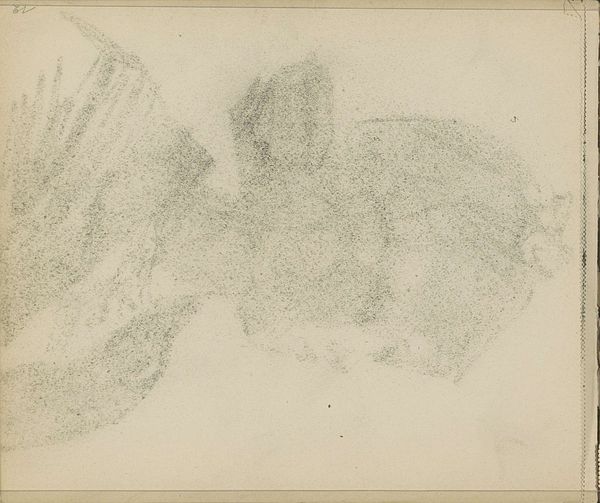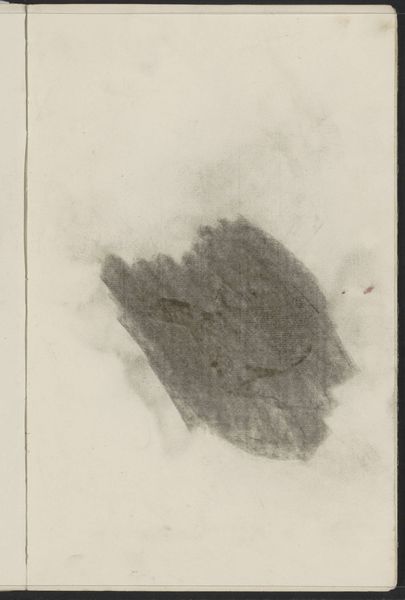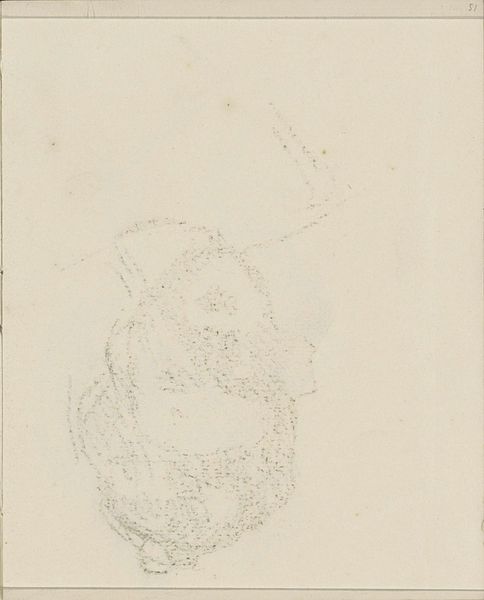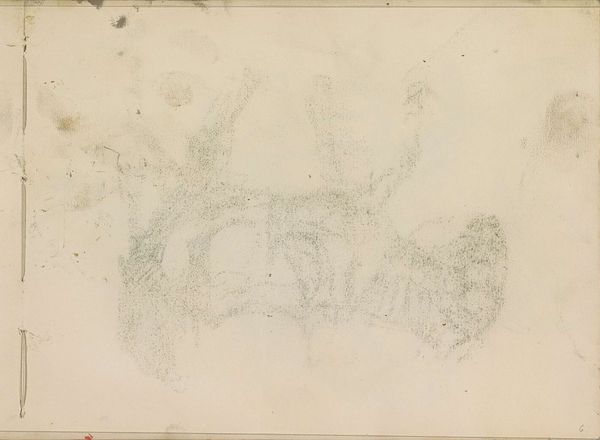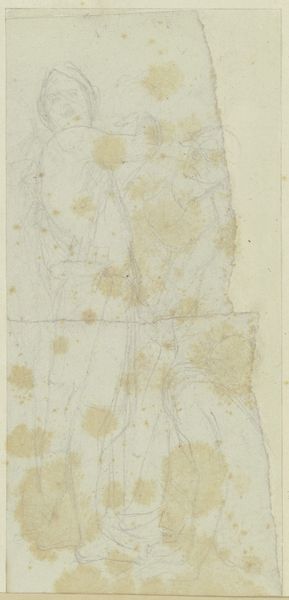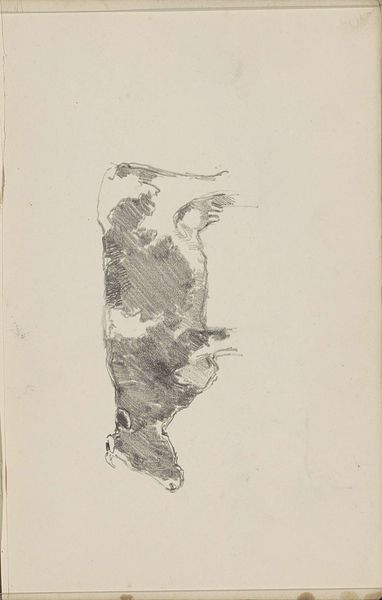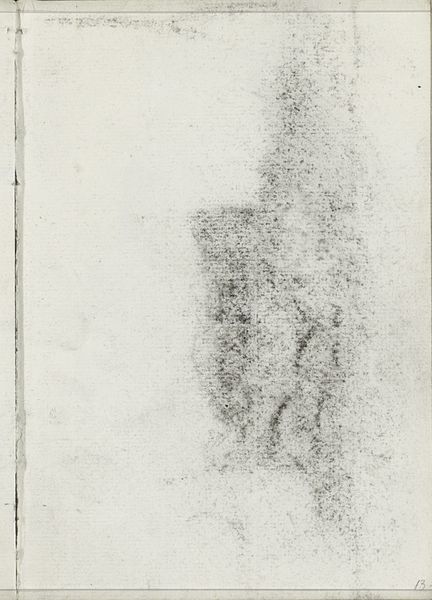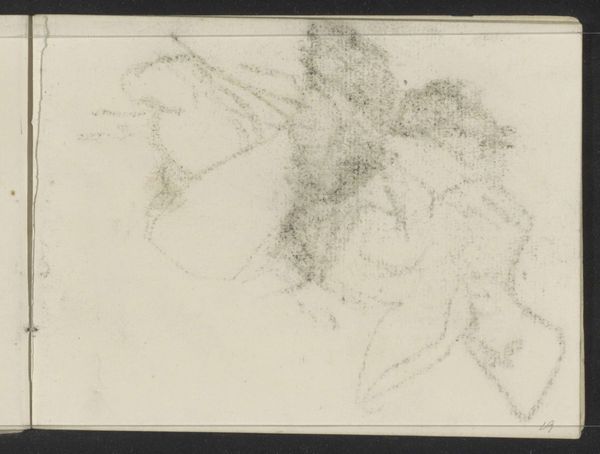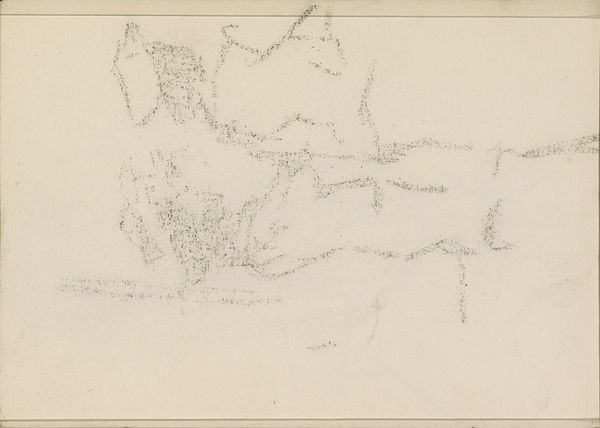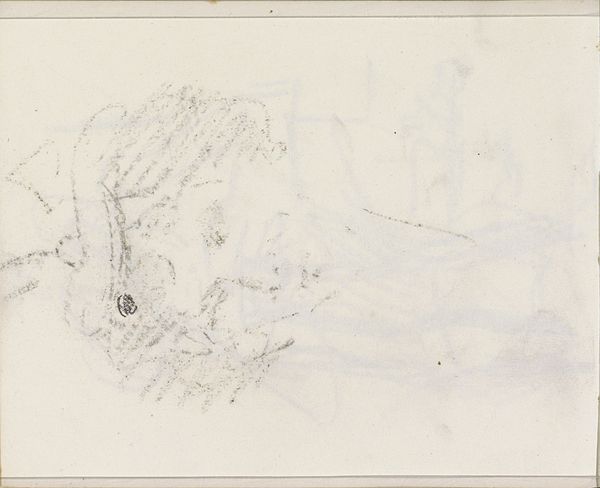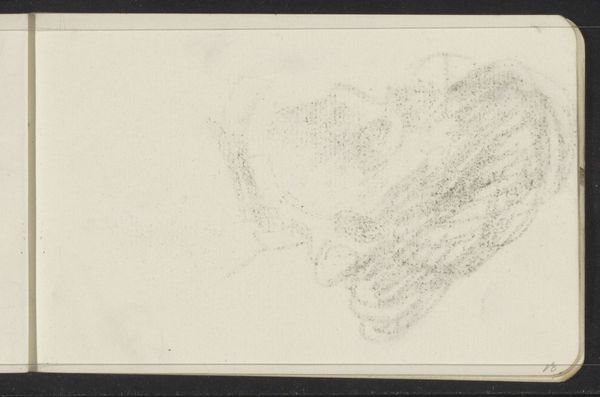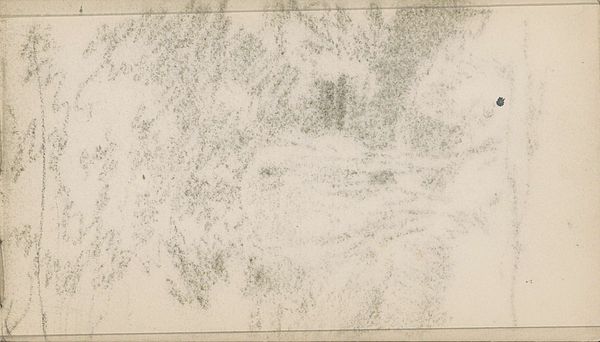
Copyright: Rijks Museum: Open Domain
Editor: Here we have "Abklatsch van de krijttekening op pagina 33," a graphite drawing by Isaac Israels, created sometime between 1886 and 1903. It’s a very faint portrait. I'm struck by its ethereal quality – almost ghostly. What can you tell me about this work? Curator: This ghostly quality, as you call it, speaks volumes. Israels, working during a period of immense social change, often depicted the marginalized, including working-class women and children. Consider how this ephemeral rendering might reflect their societal invisibility. Does the medium—a fleeting graphite sketch—mirror the precarity of their existence? Editor: That's a powerful connection. So, the looseness isn't just stylistic, but also a social commentary? Curator: Precisely. Israels was engaging with the visual language of Impressionism, yes, but also using it to question representation itself. Who gets remembered? Who is rendered permanent, and who fades away? The work makes you ask, who had access to be immortalized in art, and who was overlooked? Editor: The casual nature of the drawing almost feels like a critique of the formal portraits of the elite. Curator: Exactly. Think about the rise of photography at this time, and how it challenged traditional notions of portraiture. Israels seems to be using drawing to capture a fleeting impression, a raw and immediate presence that resists the idealization often found in more formal works. What do you think the choice to call it a page "abklatch" or a rubbing off entails? Editor: It suggests reproduction, a copy. Like he is tracing something and that it does not hold as much value, like the life he represents. It feels like it points out his lack of agency? Curator: An astute point. The title implicates how women were not masters of their own images and highlights the dynamics between artist and subject. Ultimately, this "sketch" invites us to reconsider not only how we look at art but also at the lives and social contexts it represents. Editor: That gives me a completely new perspective on it. I will consider this in my understanding of portraiture as a whole. Curator: Indeed, reframing is an essential component to the ever-evolving nature of our understandings and appreciation.
Comments
No comments
Be the first to comment and join the conversation on the ultimate creative platform.
